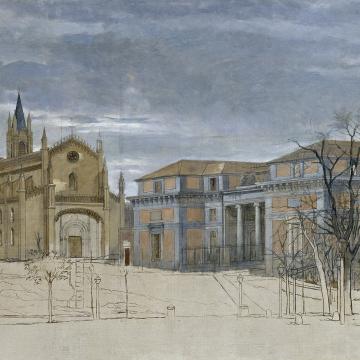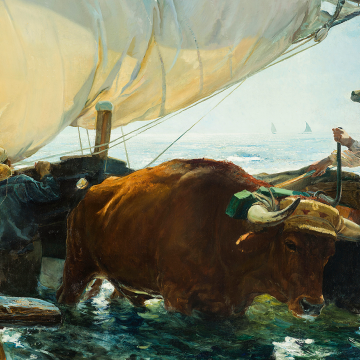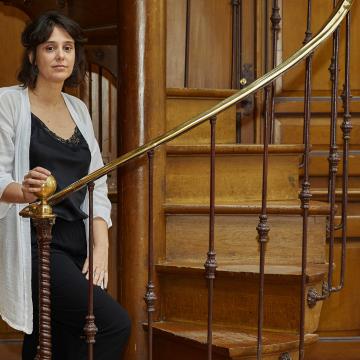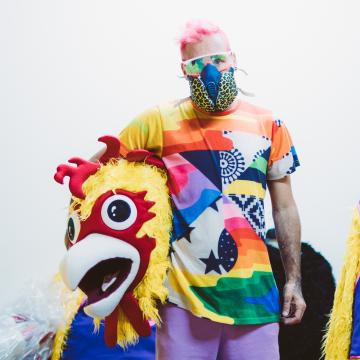Since opening on the 17th of April, Espacio Iberia has welcomed dozens of guests with one thing in common: their infinite talent. Talent that has inspired all the people who have sat there to listen to them.
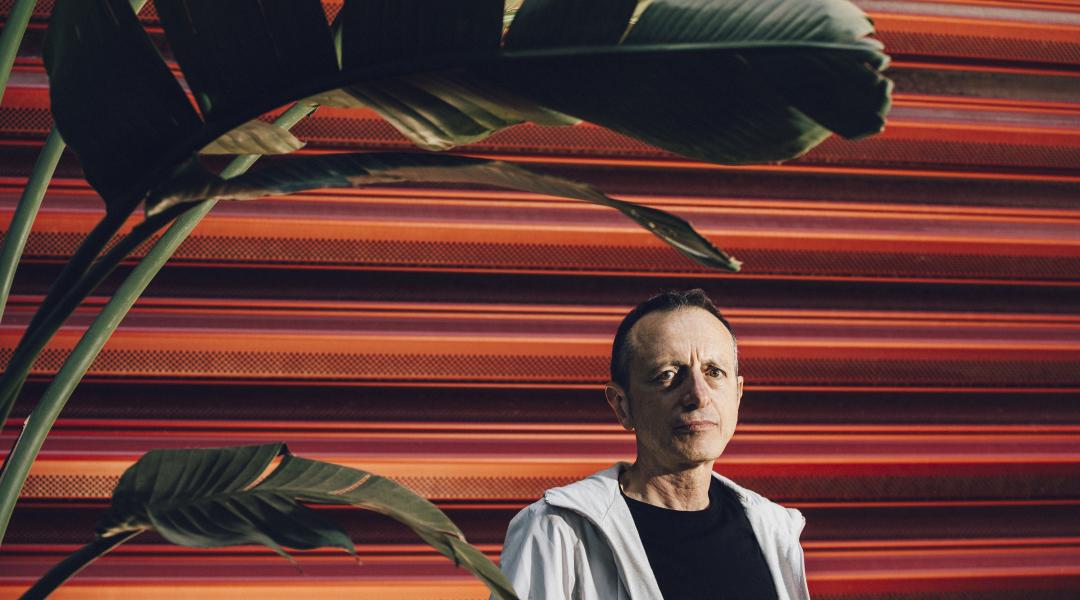
At 60, Rogelio López Cuenca is facing a key moment in his life that is also a double-edged sword—a retrospective exhibition. Museo Nacional de Arte Reina Sofía (MNARS) is showcasing the work of this “labourer of contemporary art” in 'Keep Reading, Giving Rise' until 26 August. A statement of intent highlighting the language, painting, poetry, collage, irony, and tons of humour permeating his work.
Thin and sinewy, he looks more like a trekking enthusiast than like a contemporary artist using his body and image as a vehicle of expression. But this discreet look may be seen as the perfect counterpoint to a sharp, witty, fun, uncomfortable and thought-provoking body of work. How does it feel to see all your work in one place? “I’m not sure I’ve digested it yet or if I’ll ever digest it because I haven’t felt anything special. There are some things that impress me, specially the dates. And I liked it when Francisco Godoy [from MNARS] went through my archives and came up with the main lines of my work and interests, something I myself hadn’t detected.”
The world modesty is felt throughout our conversation, whether spoken or mute. When speaking about his collective works —the oldest ones—, the management of ingenuity and the ego for the sake of the work of art is brought up in the conversation: “Art requires modesty and awareness. Culture as a phenomenon and culture in itself is a collective process.” And he goes on: “Even the most misanthropists of artists who think they are isolated in an ivory tower are in permanent dialogue with a legacy in which their work is inscribed.”
We are at NuBel, the museum’s retro-futuristic cafeteria, a multidisciplinary space, like López Cuenca himself, where people can drink, eat, read o listen to DJ sets. A place one of Spain’s most relevant living contemporary artists is, paradoxically, enjoying in perfect anonymity while talking about his live and work. What nurtures López Cuenca’s soul? “Reading, knowledge, the search for references and diving into the genealogy of what I’m working on.”
This reflection make us wonder whether an art world without controversies, provocations and obscene economic figures would become news. “The media usually pays attention to star artists and pieces. I think works that were never finished or closed, incomplete open roads, loose ends and cracks are much more interesting.”
Indeed, minority art does not sell or does not attract interest. Precariousness in the world of culture is common, and remunerations are inadequate. “I want to avoid self-satisfaction as an artist. I haven’t done anything else since the 80s. I also write theory and art critique, curate exhibitions, teach courses and workshops, and so on. In fact, sometimes I make more money doing these.”
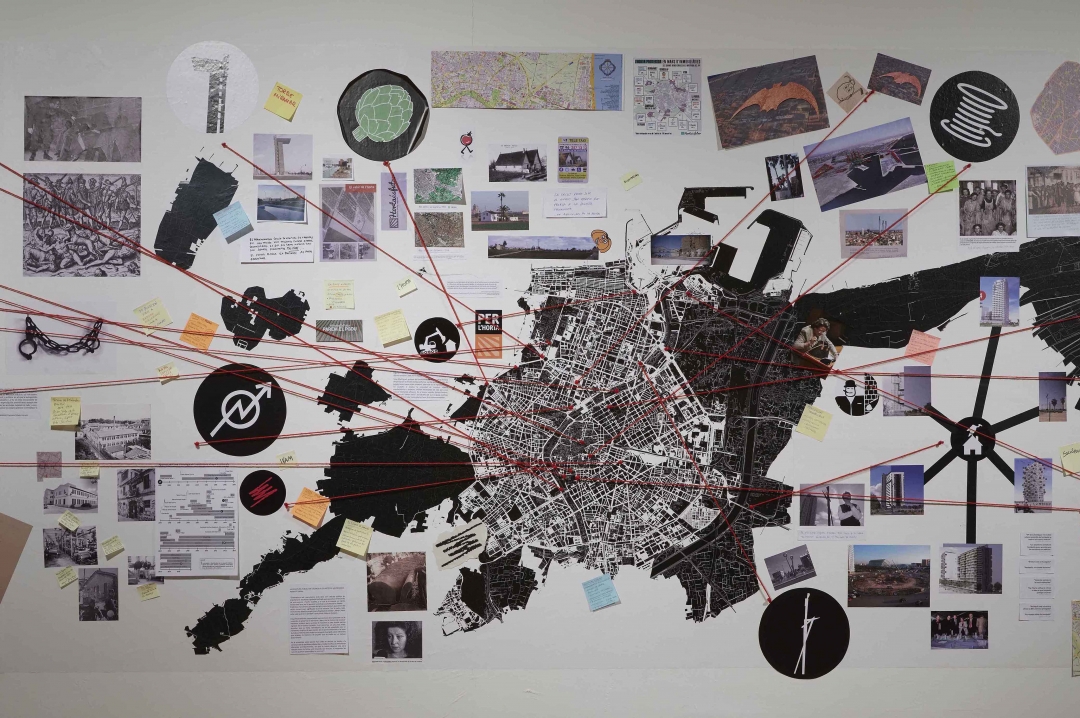
López Cuenca uses this map of the city of Valencia as a stage where citizens' protests, influence peddling, unfettered building and the green belt converge. © MNARS
“The media usually pays attention to star artists and pieces”
The work of Rogelio López Cuenca took a turning point in 1992, in the context of the 5th Centenary of the Discovery of America, the Universal Exhibition of Seville, Madrid as the Culture Capital of Europe and the Barcelona Olympic Games. Following this eventful year, he carried out critical interventions focusing on migratory policies, urban speculation, historical memory and the mistreatment of culture as a tourism prop rather than as an offshoot of art. The Nerja-born artist reflects on this: "It is clear to me that in the so-called developed societies culture has come to be understood as a kind of luxury—something we access after we have satisfied our basic needs. But in most of the rest of the world this distinction doesn’t exist. Culture is not leisure. Culture is inseparable from life.”
In the work of this linguist, the Picasso-Málaga-Picasso axis occupies a prominent space. He calls it “the picassisacion of Málaga” and the “malaguizacion of Picasso”. "Everything is designed to satisfy visitors. This is in fact tourism. We are all tourists at some point. Budgets granted for this kind of tourist attractions should come from the Department of Tourism rather than from culture funds. Culture is very similar to agriculture—you can’t be harvesting all the time.”
Regarding the health of contemporary art in Spain, Rogelio López Cuenca smirks and deploys a fine irony: "The crisis of the modern narrative offers extraordinarily healthy perspectives". But then he adds: "What we must always remember is that the market is not interested at all in most of the art that is being produced today.”
